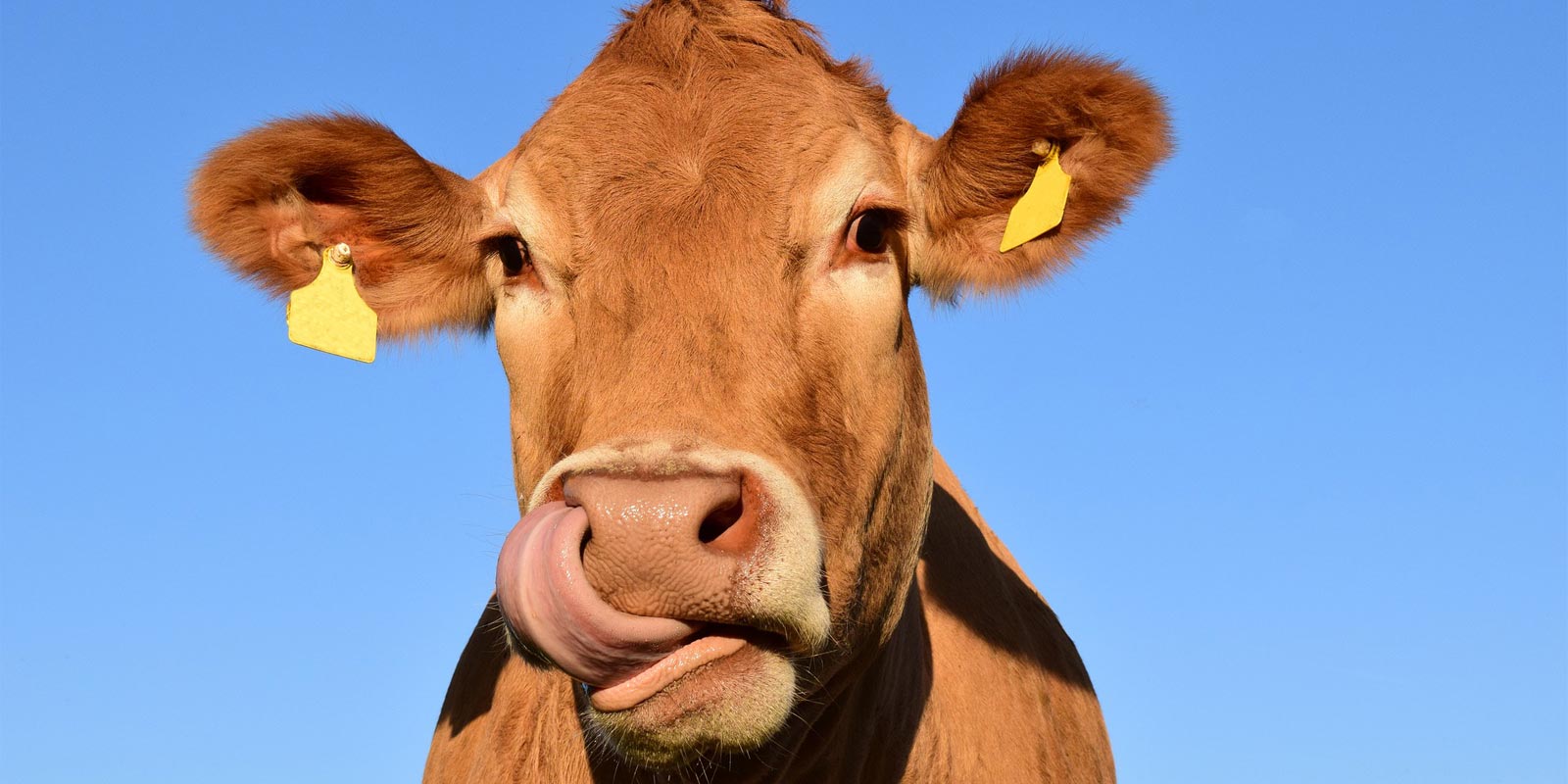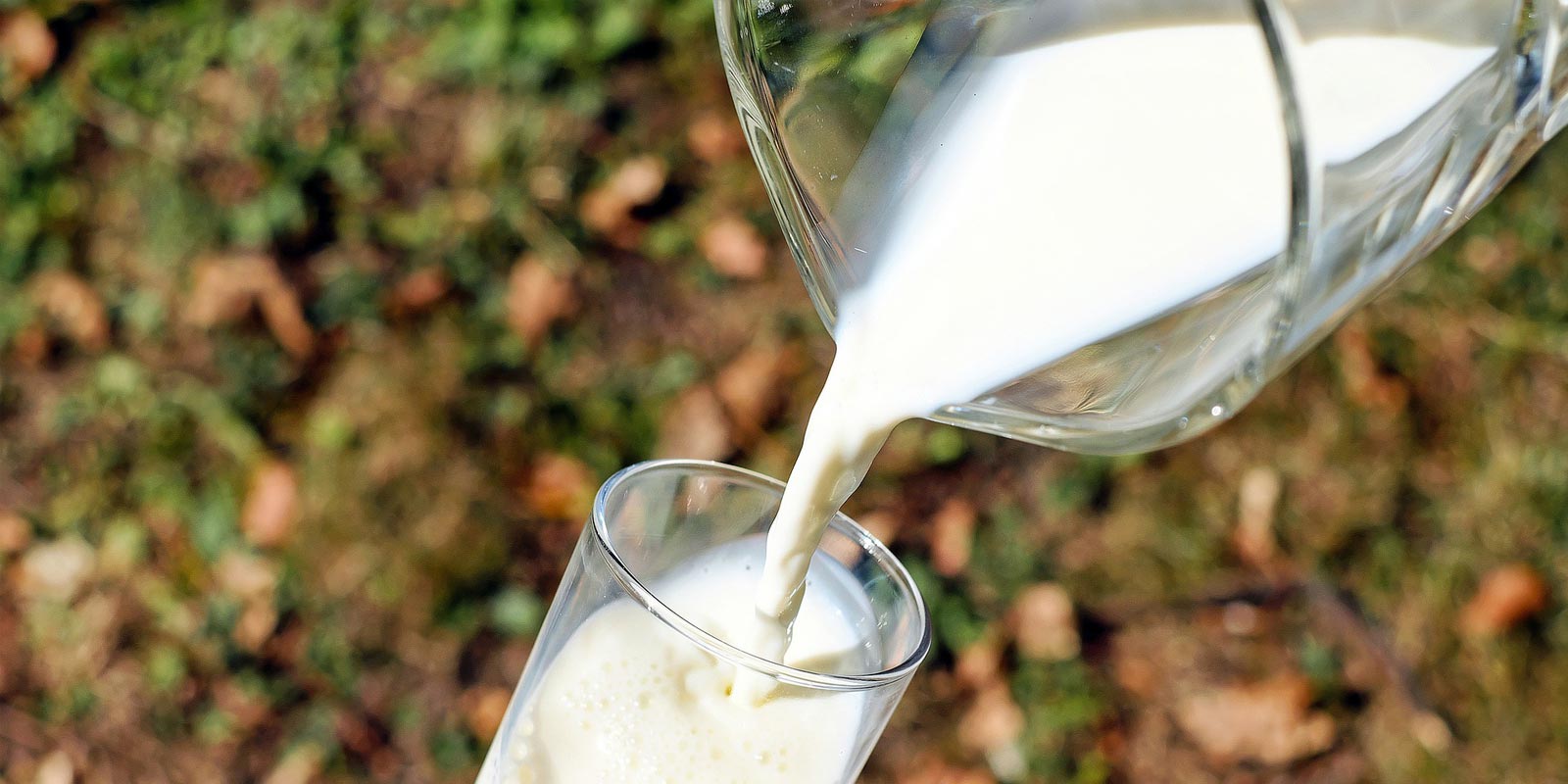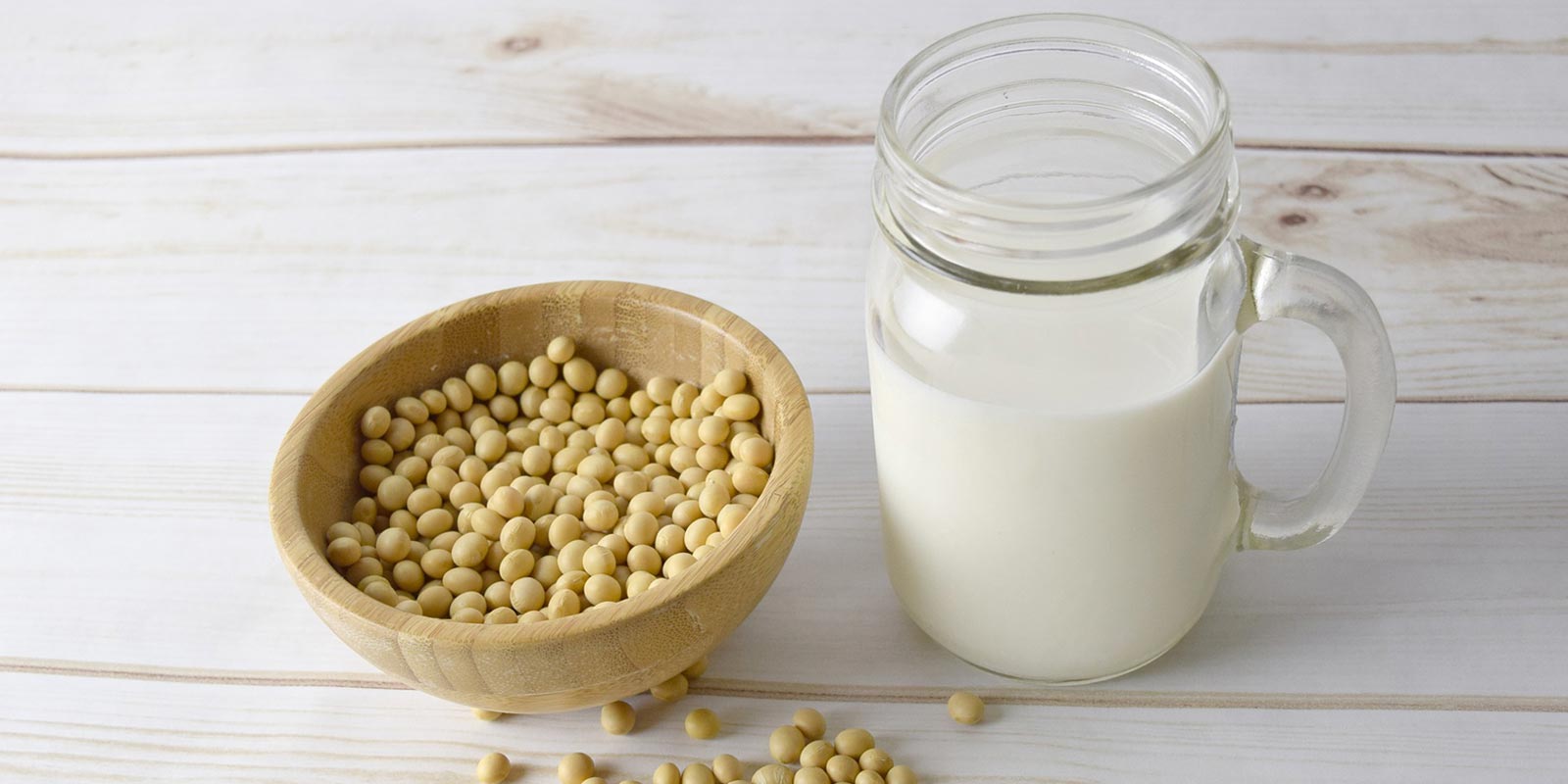Take a look at the many different types of milk in this informative outline of what’s available on the market today.
Milk plays a huge role in our lives. From our early beginnings to adulthood, whether from living beings or plant life, we rely on it for sustenance, flavour and nutrients.
These days, milk comes in a lot of different forms. Head to the supermarket and it is easy to feel confused. Milk options abound and each has its benefits.
The different types of milk split into two categories; animal-based and plant-based. The animal-based milk you see on the shelf usually comes from a cow or a goat. If your milk is plant-based, it is liquid sourced from a grain, nut or vegetable. This liquid is too thick to be called juice, hence it being described as milk. Plus, the term rice-juice is somewhat off-putting!
Let’s break it down and look at all the different types of milk.
The different types of milk
Animal-based milk
The humble cow has been a friend to humanity since the dawn of time. Not only do many people find their meat delicious and highly packed with the protein essential for stone-age survival, but humans have also bred them to be relatively docile. This means we can keep big herds and profit from their extremely nutritious and palatable milk.
People often point out that drinking the milk of another species is somewhat odd. However, there is evidence we have been doing so for thousands of years.
It is believed a lack of other food sources drove early farmers to sample cow’s milk. One can only imagine the trepidation that first farmer felt as he raised a vessel of warm liquid straight from a cow’s teat to his lips. However, the fat and nutrient-packed beverage was better than nothing. Drinking it to ward off starvation soon evolved to it being used to make other products like cheese and butter.
Fortunately for us, modern science means we no longer drink milk straight from the udder. We now treat it, flavour it and alter its nutritional value.

As it stands today, here are the options of cows milk to choose from:
Full cream
This is the ‘regular’ pasteurised and homogenised milk. It is mixed thoroughly to prevent the cream from rising to the top.
Benefits/recommendations: Creamy and delicious, this milk is higher in fat.
Low fat
This milk boasts a lower fat content than full-cream while retaining much of its creaminess.
Benefits/recommendations: A lot of low-fat milk varieties also contain extra calcium.
Skim
This is the lowest fat alternative; long touted as the healthiest choice.
Benefits/recommendations: Some scientists now question the claim of skim milk being healthier because of the cholesterol or carbohydrate content. Speak to your doctor if you want to switch to skim milk for health reasons.
Enhanced calcium
Pretty much what it says on the label.
Benefits/recommendations: This is a good option for menopausal women who have trouble absorbing the calcium they need from regular milk.
Lactose-free
The choice for lactose-intolerant folk.
Benefits/recommendations: This is a good alternative for those who have trouble digesting lactose but still want to enjoy milk. However, lactose-free milk can have more sugar, to help enhance the taste.
A1 and A2
A1 and A2 are two very similar types of proteins found in milk. Early in the new century, some scientists found a way to breed cows to identify A2 producing cows. This meant a new and more expensive type of milk.
Benefits/recommendations: A2 is claimed to be the healthier type. For a far more in-depth look at the issue, our very own Dr. Karl Kruszelnicki has an excellent article over here. In brief, the evidence for A2 and against A1 is flimsy. Some people swear by it so you are free to make your own choice.
Raw milk
Of all the different types of milk, this one might be the most controversial. Raw milk is milk that has not been traditionally pasteurised and homogenised. A cold process is often used instead of the standard heat.
Benefits/recommendations: Proponents of raw milk claim it is healthier because standard processing reduces nutrients but many scientists deny this. The best argument for raw milk is if you prefer the taste. Be aware, raw milk is mostly safe but the risk of contracting an infection is considerably higher than regular milk. This is because it isn’t decontaminated. There is a food authority approved, cold pressed raw milk available from a company called Made by Cow.
Goats milk
After the cow, the humble goat is our next greatest producer of milk.
Benefits/recommendations:
The scales are actually pretty even when it comes to the benefits of cow’s milk versus goat’s milk, unless you are allergic to cow’s milk. Goat’s milk has more fat and calories but it has lower sugar content, and higher levels of calcium and magnesium. Trying to choose between cow and goat’s milk? It is best to check with your doctor as to which nutrients you personally need most (unless you prefer the taste, in which case, enjoy!).
Different types of milk: Plant based/vegan milk options
Animal-based milk is easily accessible and tasty but it is not for everyone. Plenty of people have lactose issues and can’t drink animal milk. What’s more, a growing number of people now seek plant-based alternatives. They want different types of ‘milk’ for ethical or health reasons. Some people just prefer the taste of plant-based milk.
Alternative milks have been around for centuries. According to soya.be, “the earliest European reference to soy milk was in 1665 by Domingo Fernandez de Navarrete and in 1790 by Juan de Loureiro, a Portuguese missionary who lived in Vietnam. All these early references to soy milk only mentioned soy milk as part of the process for making tofu. Only 1866, Frenchman Paul Champion, who had traveled in China, mentioned that the Chinese drank hot soy milk for breakfast.”
As shared by Paste Magazine, according to the book History of Soymilk and Other Non-Dairy Milks, almond milk was first mentioned in writing in a 13th-century cookbook in Iraq, which describes the process of creating the alternative milk. According to historians, Europeans also used almond milk as a special substitute for animal milk during Lent as early as the 13th century.
Take a look at soy milk, almond milk and the most popular non-dairy milk alternatives:
Soy
This milk is the most commonly available of the non-dairy milk options and is made from soybeans. Interestingly, soy milk’s original form is a natural by-product of the manufacture of tofu.
Benefits/recommendations: With its creaminess and high protein content, soy is a great choice. According to Healthline, soy is still a healthy alternative to dairy. The nutty flavour works well in a latte, although pouring soy directly into a hot cup of tea can cause it to separate.
Almond
Probably the most popular after soy is almond milk. It has a pleasant, sweet taste as well as the added bonus of being easy to make at home. You’ll find instructions for gluten-free, vegan almond milk here: https://minimalistbaker.com/how-to-make-almond-milk/
Benefits/recommendations: Almond milk is packed full of protein and calcium so it works extremely well as a non-dairy alternative.
Oat
Oat milk is popular as a plant-based milk for cooking sweet treats.
Benefits/recommendations: The natural oaty sweetness as well as oat milk’s high fibre and low saturated fat content makes it a great one to try out next time you bake.
Cashew
Cashew milk also makes its mark as a milk for baking and cooking. This milk has a strong nutty taste and high protein levels.
Benefits/recommendations: This milk can make for unique and tasty soups or sauces. Try a few recipes with cashew milk and see how they turn out.
Rice
This milk has no lactose or nut content and is probably the safest all around for those with sensitive digestive systems.
Benefits/recommendation: Rice milk is the best option if you have multiple allergies.
Coconut
Delicious and creamy, coconut milk is ideal for cooking or just enjoying it on its own. If you’re hoping to try it, buy drinking milk and not canned coconut milk that is designed for cooking.
Benefits/recommendations: Coconut milk, with its tropical flavour, is ideal for cooking. Here is a recipe for coconut milk pancakes with mango and lime syrup from Gordon Ramsey: https://www.gordonramsay.com/gr/recipes/coconut-pancakes-with-mango-slices-and-lime-syrup/
Hemp
None of the problematic issues of marijuana and THC are present in hemp milk.
Benefits/recommendations: Organic Hemp Milk Australia claims one 250ml glass of hemp milk contains around 48% of your daily calcium requirements. It is creamy and has an excellent high level of protein.
Flax
Lactose and cholesterol-free, flax milk is another rising alternative to traditional milk.
Benefits/recommendations: This sweet milk is not quite as creamy as other plant-based milks. It is definitely an option for those with soy allergies.
Hazelnut and macadamia
Creamy nut milks like these may well take over from almond milk in time.
Benefits/recommendations: These up-and-comers are lactose-free.
Spelt
Sweet-tasting spelt milk is gaining popularity as well. Just be aware, being in the wheat family, spelt milk is not gluten-free.
Benefits/recommendations: Spelt contains calcium, selenium and vitamins B1, B6 and E. However, the product is best avoided if you have gluten intolerance.
Pea
Pea milk is made from yellow split peas.
Benefits/recommendations: This milk is generally well fortified with calcium and potassium. The peas used to make it often use less water to produce so the product also has environmental benefits.
As you can see, there are many different types of milk. Some may argue plant milks aren’t strictly milk but they have earned the label due to their colour and use.
Milk for health
It can be difficult to choose between different types of milk.
Overall, milk is a healthy and nutritious drink. It contains calcium which is regarded as important for bone health. As with everything, when consumed in moderation, milk is not bad for you. When it comes to milk, most health issues mostly come from allergies and intolerances. For those with lactose intolerance, cow’s milk is best avoided. If your doctor has recommended a low-fat diet, switching to skim might make sense for you.
Before you make big dietary changes, talk to a healthcare professional, especially if the changes affect young children, pregnant or breastfeeding women.
For the kids, milk is still a great option. These days full cream tends to be recommended for young kids, but again, kids can enjoy most milks just like you.
Of course, adding flavours can help improve milk consumption. Just be aware of the sugar content in chocolate milk, strawberry milk, Milo and iced coffee. Keep flavoured milk as a treat.
The best milk to pair with coffee
Of course, one of the best uses for milk is to make coffee even better.
As to which milk is the best for coffee, it’s a matter of taste. Cow’s milk is always a good option, especially when heated. The higher fat content helps it form a better froth. However, many of the plant based/vegan milk options can be heated, frothed and added to coffee.

Why not try a soy or almond milk coffee next time you’re at MaZi? You can also request one of these milks in your milkshake or iced-milk beverage. We serve full cream, skim, soy, lactose-free and almond. Come and see us for a hot or cold drink today.
More about the origins of cows milk
According to slate.com, “Cow’s milk has aesthetic and practical advantages. It separates itself into cream and milk, so it can be made into an easily drinkable beverage as well as all the luscious cream-based comestibles, such as ice cream and crème fraîche. Its fat content is similar to that of human milk, which makes it familiar to our palates. Its relative blandness makes it an attractive blank slate for the creation of cheeses with a range of flavour profiles and consistencies, from runny Camemberts to rock-hard Goudas.”
One of the early revolutions in milk occurred when French microbiologist Louis Pasteur invented pasteurisation. This process of gently heating the milk helps eliminate dangerous pathogens and extends milk’s shelf life. This invention made it easier to mass-produce milk safely and deliver it to people’s doors. Instead of owning a cow or travelling to a farm to collect fresh milk, the local milkman delivered a bottled product.
Thanks to the advances of the industrial revolution, more people could access healthy and delicious milk.
By the 1980s, food had become so abundant that people began to worry about eating the quantities they were eating. This led to the introduction of skim and low-fat milk. According to kitchn.com, “Traditionally, the fat was removed naturally from milk due to gravity. If fresh milk is left to sit and settle, the cream — which is where most of the fat is — rises to the top, leaving behind milk with much less fat.
The quicker, modernised way of making low-fat and skim milks is to place the whole milk into a machine called a centrifugal separator, which spins some or all of the fat globules out of the milk.”


